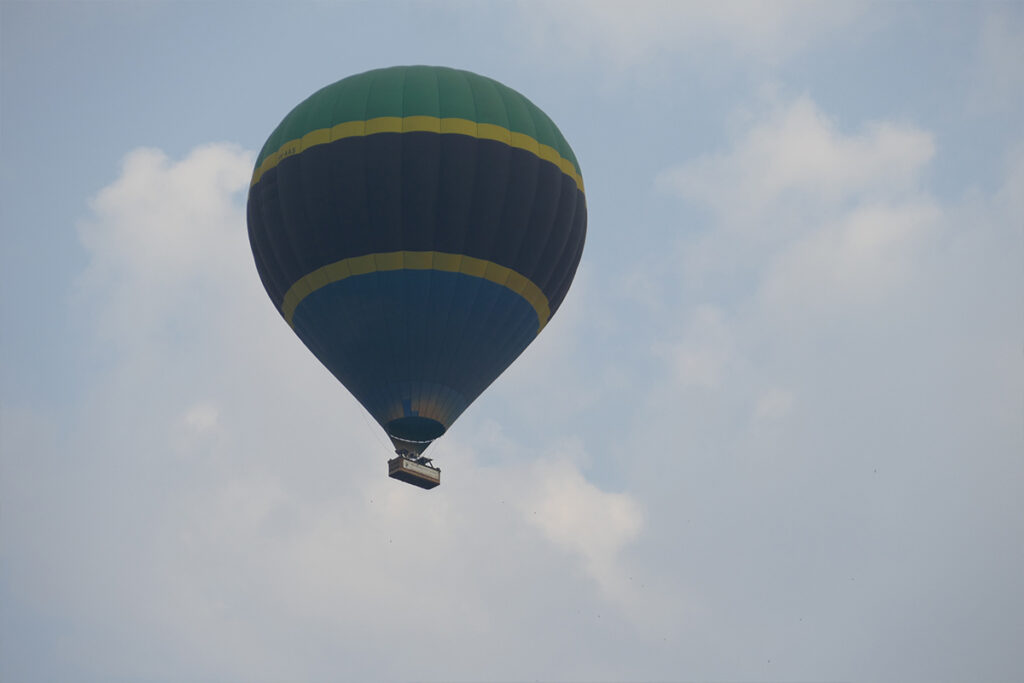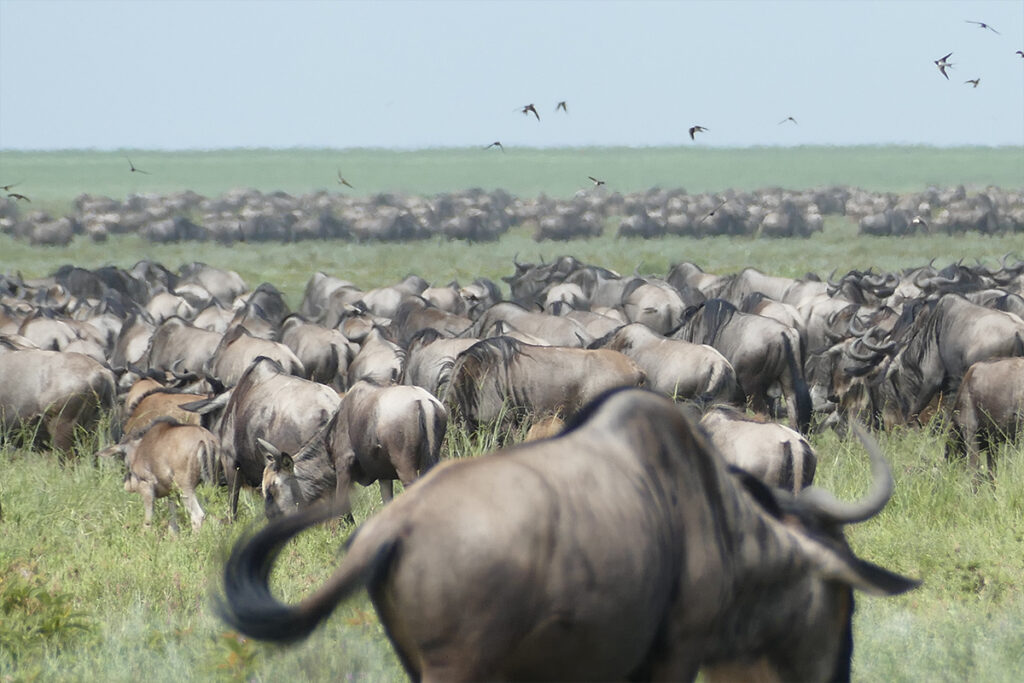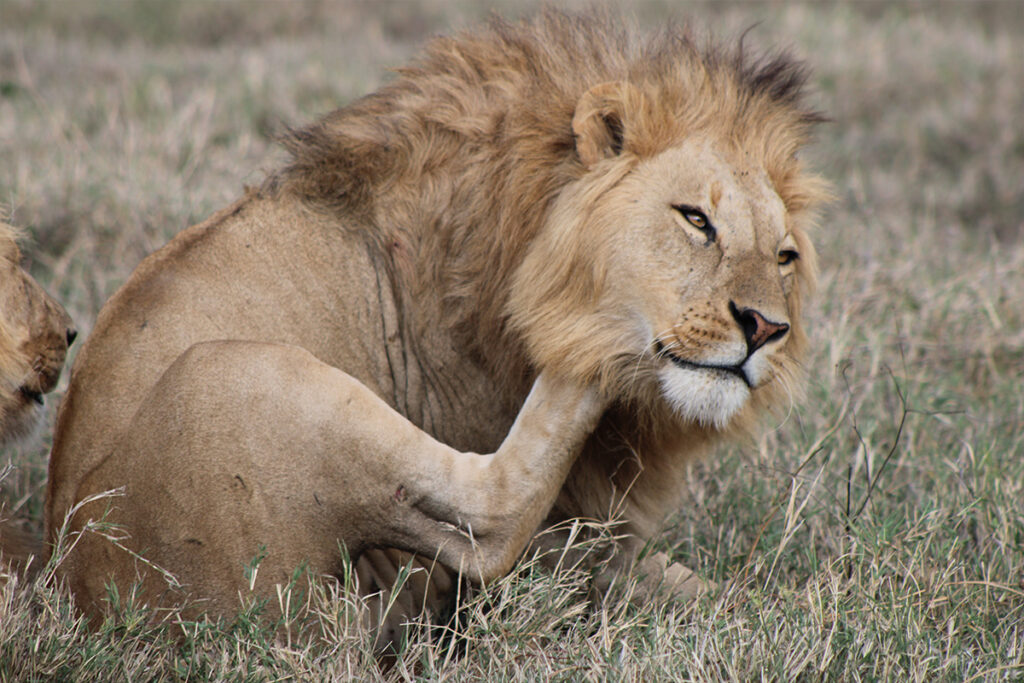Home to the awe-inspiring Great Migration, Serengeti National Park offers one of the most remarkable wildlife spectacles on Earth. Here, millions of wildebeest and zebras embark on their yearly odyssey across the plains, braving predators and rivers. It’s an experience that leaves even the most seasoned safari-goers spellbound.
The Serengeti, sprawling over 14,750 square kilometers, boasts a rich diversity of wildlife with over 500 bird species and 70 large mammal species. Established in 1951, it stands as a beacon of conservation efforts, protecting this delicate ecosystem. With a staggering 1.5 million wildebeest alone, it embodies the sheer scale and wonder of nature’s grand design.

Serengeti National Park Safari: The Ultimate Wildlife Experience
Serengeti National Park in Tanzania is often celebrated for its vast plains and diverse wildlife. It’s famous for the Great Migration, where over a million wildebeest and 200,000 zebras travel in search of fresh grazing. This event creates an unforgettable spectacle of nature’s raw power and beauty. The sight of these animals moving together is truly breathtaking. It offers a unique opportunity for wildlife enthusiasts to witness this incredible journey.
The park spans 14,750 square kilometers and houses a rich variety of ecosystems. From grasslands to woodlands and savannahs, each area supports different species. Lions, elephants, and leopards are among the top predators you can spot. Bird watchers will be thrilled by over 500 species soaring through the skies. The mix of habitats ensures a dynamic and ever-changing experience for visitors.
Conservation efforts are key to the park’s success, ensuring the environment remains sustainable for future generations. Anti-poaching units work tirelessly to protect endangered species. Several organizations collaborate to maintain the delicate balance of this ecosystem. Sustainable tourism initiatives minimize human impact while maximizing educational opportunities. These efforts help preserve the natural wonder that is the Serengeti.
Planning a safari in the Serengeti involves choosing the right time of year for what you hope to see. The dry season, from June to October, is best for viewing large predators and the Great Migration. Many accommodation options range from budget-friendly camps to luxurious lodges. Each provides a unique angle on the park’s many wonders. Researching in advance can make your Serengeti safari a truly unforgettable adventure.
Exploring the Serengeti Ecosystem
The Serengeti ecosystem is a vast wilderness teeming with life. It spans diverse landscapes, including savannahs, grasslands, and woodlands. These varied habitats support a wide range of species. Not only are there big mammals like elephants, but numerous reptiles and birds also thrive here. This diversity is what makes the ecosystem so special and complex.
The ecosystem is most famous for the Great Migration, as animals move across the plains. Wildebeests, zebras, and gazelles make the long trek together. The journey is not only about survival but also about maintaining the balance within the ecosystem. Predators like lions and hyenas follow the herds, creating a dramatic dance of life and death. Watching these interactions is a highlight for any explorer.
A multitude of plant species also create a vibrant landscape in the Serengeti. Acacia trees and vast grasslands offer food and shelter. Each plant plays a vital role in maintaining the health of the ecosystem. They provide shade and become nesting sites for birds. The interconnectedness of plant and animal life is truly fascinating.
Visitor impact is managed through eco-friendly tourism and conservation efforts. Park regulations ensure that wildlife and their habitats are protected. Guides educate visitors on how to observe without disturbing the natural environment. By respecting these guidelines, everyone helps keep the Serengeti thriving. This responsible approach allows future generations to enjoy its beauty.
The Great Migration: Witnessing the Largest Overland Migration in the World
The Great Migration in the Serengeti is one of the most extraordinary natural events on our planet. Every year, around two million wildebeests, zebras, and gazelles travel over 800 kilometers. They move in a loop from Tanzania’s Serengeti into Kenya’s Maasai Mara. This journey is driven by the search for fresh grass and water. Their path is filled with danger as they face predators and rivers.
Watching these animals cross the Mara River is a thrilling part of the migration. The river is full of crocodiles waiting for their chance to hunt. The sight of thousands of animals plunging into the river is breathtaking. This is a moment where life hangs in the balance for many. Onlookers are often left speechless by the bravery of these creatures.
The migration plays a crucial role in the ecosystem of the Serengeti. As the herds move, they graze on grass, which encourages new growth. Their movement also spreads nutrients across the plains, enriching the soil. Predators such as lions and cheetahs rely on the herds for food. Everything in the Serengeti is connected, making it a dynamic and ever-changing environment.
Timing your visit to watch the Great Migration enhances your safari experience. While the animals are always on the move, their path changes based on the seasons. Available tours provide opportunities to witness different stages of the journey. Lodges and camps vary from basic to luxurious, offering something for every budget. The chance to see the migration firsthand is truly unforgettable.
Diverse Wildlife Residing in the Serengeti
The Serengeti is home to a rich assortment of wildlife that captivates visitors from around the world. This incredible diversity results from the park’s varied habitats, including open grasslands, riverine forests, and wooded hills. Lions, known to be the kings of the Serengeti, roam in prides spread across the plains. Alongside them, leopards stealthily move through the trees, embodying grace and agility. Each predator has adapted perfectly to its environment.
For herbivores, the Serengeti offers a bounty of greenery to graze on. Elephants, the largest land animals, wander in groups, shaping the land as they move. Giraffes elegantly tower over other creatures, reaching leaves that others can’t. Wildebeests and zebras share the food-rich landscape in harmony, often spotted in large herds. The interactions among these herbivores paint a stunning picture of cooperation and competition.
Birdwatchers will be thrilled by the extensive avian life fluttering through the Serengeti skies. Over 500 bird species, such as the ostrich, the world’s largest bird, can be found here. Colorful flocks of crowned cranes and lilac-breasted rollers are often seen adding splashes of color against the blue sky. Birds of prey like eagles and vultures stand sentinel, ready to swoop down when needed. Each bird species plays a pivotal role in maintaining the ecosystem balance.
The small creatures of the Serengeti also contribute significantly to its vibrant ecosystem. Meerkats and mongoose scurry about, using teamwork to keep predators at bay. Reptiles, such as crocodiles and lizards, add to the tapestry of life here. Amphibians find refuge in the region’s various wetlands. Every animal, big or small, has its place within this interconnected web of life.
Conservation Efforts in the Serengeti
The Serengeti is not just famous for its wildlife, but also for the efforts to preserve this natural wonder. Conservationists work tirelessly to protect and maintain the park’s ecological balance. Anti-poaching patrols are active day and night to safeguard endangered species. Their efforts have significantly reduced illegal hunting over the years. These dedicated individuals are crucial to the Serengeti’s future.
Several organizations collaborate to ensure the Serengeti’s long-term survival. They focus on ecosystem management, community involvement, and research. Projects aim to restore natural habitats and promote wildlife corridors. These corridors help animals move freely and safely throughout the region. By engaging local communities, conservationists ensure that everyone benefits from protecting the park.
Sustainable tourism plays a vital role in conservation efforts. Eco-friendly lodges and camps minimize their environmental impact while providing jobs and income for nearby villagers. Visitors are encouraged to follow guidelines that prioritize park preservation. This approach allows them to enjoy the amazing natural wonders without causing harm. Responsible tourism supports the ongoing efforts to conserve the Serengeti’s treasures.
Environmental education is another key element of conservation in the Serengeti. Schools and community programs teach the importance of protecting wildlife and their habitats. This education inspires younger generations to become stewards of their environment. It also strengthens the bond between people and nature. These efforts ensure that the Serengeti remains a thriving sanctuary for years to come.
Planning Your Visit to the Serengeti National Park
When organizing a trip to the Serengeti National Park, timing is a key factor to consider. The dry season, from June to October, is ideal for witnessing the Great Migration and spotting big predators. During this time, animals gather around water sources, providing excellent opportunities for viewing. The rainy season, between March and May, offers lush landscapes and fewer crowds. Each season brings its unique charm to the park.
Choosing the right accommodation depends on your preferences and budget. The park offers a range of options from basic camping to luxury lodges. Some places provide breathtaking views of the wildlife right from your window. Consider staying in mobile camps if you wish to follow the migration. These camps move with the animals, offering a unique way to experience the park.
Planning your safari activities ahead of time can enhance your experience. Guided tours, hot air balloon rides, and walking safaris are popular choices. Each provides different perspectives of the park’s diverse ecosystems. Guides share their knowledge, helping you learn about the flora and fauna. Booking in advance ensures you won’t miss these amazing opportunities.
Essential items to pack include comfortable clothing, binoculars, and a good camera to capture moments. Sunscreen and insect repellent are also important to protect against the elements. Be prepared for varying weather conditions by layering your clothes. Having a personal checklist can help you remember everything you need. Prior preparation makes for a smooth and relaxing adventure.
Key Takeaways
- The Serengeti offers an awe-inspiring safari experience with rich wildlife.
- Witness the Great Migration of millions of wildebeest and zebras yearly.
- Diverse ecosystems support lions, elephants, and various bird species.
- Eco-friendly tourism helps preserve the park’s natural beauty for visitors.
- Conservation efforts are crucial to sustaining the Serengeti’s unique environment.



